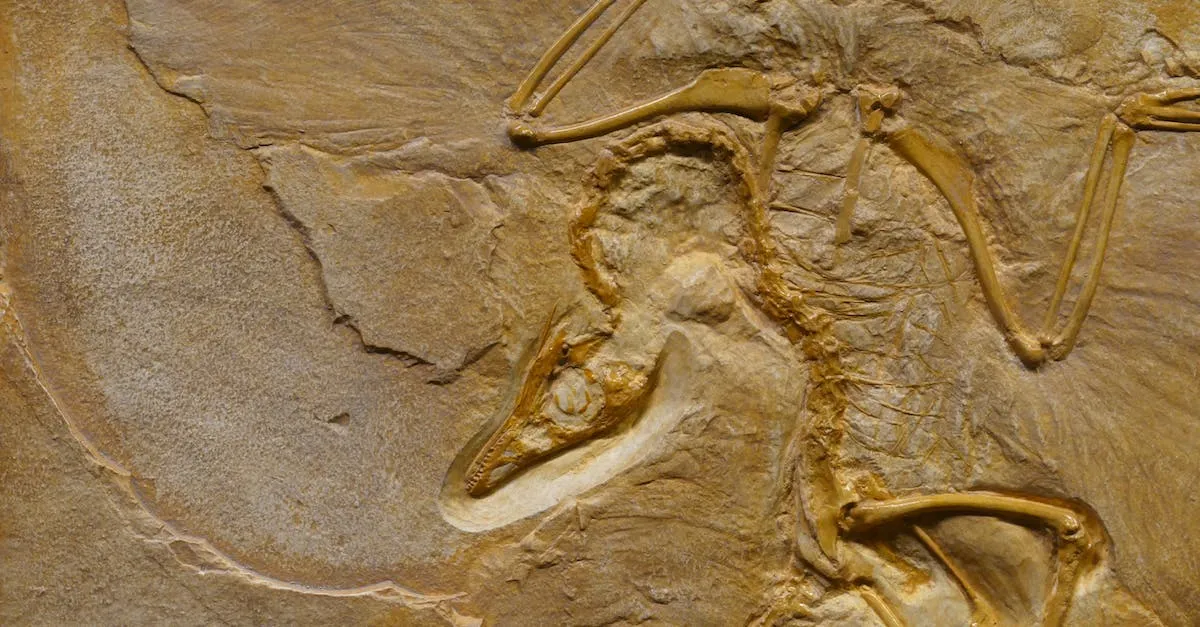Which Fields Of Science Provide Evidence For Evolution?
The theory of evolution is a unifying framework in biology, supported by evidence from a wide range of scientific disciplines. Understanding which fields provide insights into evolution gives a broader perspective on the foundations of this powerful explanatory model.
If you’re short on time, here’s a quick answer to your question: Key scientific fields that have contributed evidence for evolution include paleontology, comparative anatomy, molecular biology, embryology, and biogeography.
In this article, we’ll explore examples of evolutionary evidence from geology, paleontology, biology, genetics, and other scientific domains.
Paleontology and the Fossil Record
Paleontology, the study of ancient life through fossils, provides compelling evidence for evolution. Fossils are the preserved remains or traces of organisms that lived in the past. By examining these fossils, paleontologists can piece together the history of life on Earth and uncover how species have changed over time.
Transitional Fossils
One of the most fascinating aspects of paleontology is the discovery of transitional fossils. These are fossils that exhibit characteristics of both ancestral and descendant species, providing a clear link between them.
For example, the fossil record contains numerous transitional forms that show the evolution of whales from land-dwelling ancestors to fully aquatic creatures. These fossils display a progression of changes in skeletal structure and body shape, providing compelling evidence for the gradual transformation of species over time.
Mass Extinction Events
Another important aspect of paleontology is the study of mass extinction events. Throughout Earth’s history, there have been several catastrophic events that wiped out a significant number of species. These mass extinctions have had a profound impact on the evolution of life.
By studying the fossil record, scientists can observe how certain groups of organisms went extinct while others survived and diversified. This pattern of extinction and subsequent diversification is consistent with the predictions of evolutionary theory.
The fossil record is not only rich in evidence for evolution but also helps scientists understand the timing and pace of evolutionary changes. By dating fossils and analyzing their distribution in geological layers, researchers can reconstruct the timeline of evolutionary events and determine when different species lived.
For more information on paleontology and the fossil record, you can visit the National Park Service Fossils website or the Smithsonian National Museum of Natural History’s Paleobiology website.
Comparative Anatomy and Embryology
Comparative anatomy and embryology are two fields of science that provide compelling evidence for evolution. By studying the anatomical structures and developmental processes of different organisms, scientists have been able to uncover remarkable similarities that support the theory of evolution.
Homologous Structures
One key aspect of comparative anatomy is the study of homologous structures. These are structures that have a similar internal organization despite having different functions in different organisms. For example, the forelimbs of humans, bats, whales, and birds all have the same basic structure of bones, muscles, and joints, despite being adapted for different purposes.
This suggests a common ancestor with a similar forelimb structure, which subsequently underwent modifications to suit the specific needs of each species.
Did you know? The concept of homologous structures was first proposed by Charles Darwin in his book “On the Origin of Species” as evidence for the theory of evolution.
Similarities in Early Development
Embryology is another field that provides evidence for evolution. By comparing the early stages of development in different species, scientists have discovered striking similarities that cannot be explained by mere chance.
For instance, the early embryos of vertebrates, including humans, fish, birds, and reptiles, all possess gill slits and a tail. These features are inherited from a common ancestor and gradually disappear or develop into different structures as the embryo matures.
This similarity in early development suggests a shared evolutionary history among these species. It implies that they all descended from a common ancestor with these embryonic characteristics, further supporting the theory of evolution.
Fun fact: Did you know that the similarities in early development between humans and other animals led to the famous phrase “ontogeny recapitulates phylogeny,” coined by German biologist Ernst Haeckel?
Comparative anatomy and embryology provide tangible evidence for the theory of evolution by demonstrating the presence of shared features and developmental patterns among different species. These fields have played an instrumental role in shaping our understanding of the evolutionary processes that have shaped life on Earth.
Molecular Biology and Genetics
DNA Sequencing
One of the most compelling pieces of evidence for evolution comes from the field of molecular biology and genetics. DNA sequencing has revolutionized our understanding of the relationship between different species and provided strong evidence for the common ancestry of all living organisms.
By comparing the DNA sequences of different species, scientists can identify similarities and differences that reflect their evolutionary history.
For example, when comparing the DNA sequences of humans and chimpanzees, scientists have found a remarkable degree of similarity, with approximately 98% of our DNA being identical. This close genetic relationship supports the idea that humans and chimpanzees share a common ancestor and have evolved independently over millions of years.
Furthermore, DNA sequencing has allowed scientists to study the genetic code of extinct species, such as Neanderthals. By comparing their DNA with that of modern humans, researchers have been able to determine that Neanderthals interbred with our ancestors, leaving a small but significant genetic legacy in our DNA.
Observed Speciation Events
Another area of molecular biology and genetics that provides evidence for evolution is the study of observed speciation events. Speciation is the process by which one species splits into two or more distinct species over time.
This process can be observed in real time through the study of genetic changes within populations.
One well-known example of observed speciation is the case of the Galapagos finches. These finches, studied by Charles Darwin during his voyage on the HMS Beagle, have undergone adaptive radiation, resulting in the evolution of multiple finch species with different beak shapes and feeding habits.
By studying the DNA of these finches, scientists have been able to trace the genetic changes that drove their speciation.
In addition to the Galapagos finches, there are numerous other examples of observed speciation events, such as the emergence of new fruit fly species in laboratory experiments and the divergence of cichlid fish species in African lakes.
These observed speciation events provide direct evidence for the process of evolution and support the idea that new species can arise through genetic changes over time.
Biogeography and Ecology
Biogeography and ecology are two fields of science that provide compelling evidence for evolution. By studying the distribution of species across different regions and their interactions with their environment, scientists can gain valuable insights into the evolutionary processes that have shaped life on Earth.
Island Biogeography
Island biogeography is a subfield of biogeography that examines the distribution and diversity of species on islands. Islands provide unique opportunities for studying evolution because they are isolated habitats with distinct ecological conditions.
The theory of island biogeography, developed by Robert MacArthur and E.O. Wilson, predicts that the number of species on an island is determined by a balance between immigration and extinction rates. This theory has been supported by numerous studies and provides evidence for the role of natural selection and adaptation in driving evolutionary changes.
One classic example of island biogeography supporting evolution is the case of the Galapagos Islands. These remote islands in the Pacific Ocean are home to a diverse array of species, many of which are found nowhere else in the world.
Charles Darwin’s observations of the unique finches on these islands played a crucial role in the development of his theory of evolution by natural selection. The variations in beak shape and size among the finches provided evidence for the adaptive radiation and divergence of species from a common ancestor.
Coevolution
Coevolution is another fascinating aspect of ecology that provides evidence for evolution. It is the process in which two or more species reciprocally influence each other’s evolution. Coevolution occurs when two species have a close ecological relationship, such as predator-prey, host-parasite, or mutualistic interactions.
A classic example of coevolution is the relationship between flowers and their pollinators. Flowers have evolved a wide variety of shapes, colors, and scents to attract specific pollinators, while pollinators, in turn, have evolved specialized mouthparts or behaviors to access the flower’s nectar.
This mutualistic relationship has driven the evolution of both the flowers and the pollinators, leading to the incredible diversity of floral traits and pollinator adaptations we see today.
Furthermore, studies have shown that coevolution can also lead to the development of defensive mechanisms in prey species. For example, the arms race between predators and their prey has led to the evolution of various defense mechanisms, such as camouflage, warning coloration, or chemical defenses.
Other Relevant Fields
Geology
Geology plays a vital role in providing evidence for evolution. By studying the Earth’s layers and the fossils found within them, geologists can determine the age of rocks and the organisms that lived during different time periods.
For example, the discovery of transitional fossils, such as Archaeopteryx, provides strong evidence for the evolution of birds from dinosaurs. Geologists also study the movement of continents over time, which helps explain the distribution of species and the formation of new habitats.
The field of geology supports the theory of evolution by providing a timeline of Earth’s history and the physical evidence of how organisms have changed over time.
Anthropology
Anthropology, the study of human societies and cultures, also contributes to the evidence for evolution. By examining human fossils, anthropologists can trace the evolutionary history of our species, Homo sapiens.
The discovery of Homo habilis, Homo erectus, and Neanderthals, among others, provides a clear picture of how humans have evolved over millions of years. Additionally, anthropologists study the genetic similarities and differences between different populations to understand the migration patterns and genetic adaptations that have occurred throughout human history.
The field of anthropology provides valuable insights into the evolutionary processes that have shaped our own species.
Immunology
Immunology, the study of the immune system, also supports the theory of evolution. The immune system is highly complex and has evolved over millions of years to protect organisms from harmful pathogens.
By examining the similarities in immune system genes and proteins across different species, immunologists can trace the evolutionary relationships between organisms. For example, the discovery of the similarities between the human immune system and that of other mammals provides strong evidence for a common ancestry.
Immunology also helps explain why certain diseases affect some species more than others, based on their evolutionary history and immune system adaptations. The field of immunology adds another layer of evidence for the theory of evolution.
For more information on the evidence for evolution from these fields, you can visit the following websites:
- The Geological Society of America
- The American Anthropological Association
- The American Association of Immunologists
Conclusion
The expansive evidence for evolution extends across paleontology, anatomy, molecular biology, biogeography, and many other scientific fields. Each discipline provides unique insights that build a comprehensive picture of life evolving over billions of years.
Understanding the multidisciplinary nature of evolutionary science is key to appreciating the power and universality of Darwin’s grand theory. The diversity of empirical support across so many domains leaves no doubt that evolution is one of the most well-established explanations in all of science.







